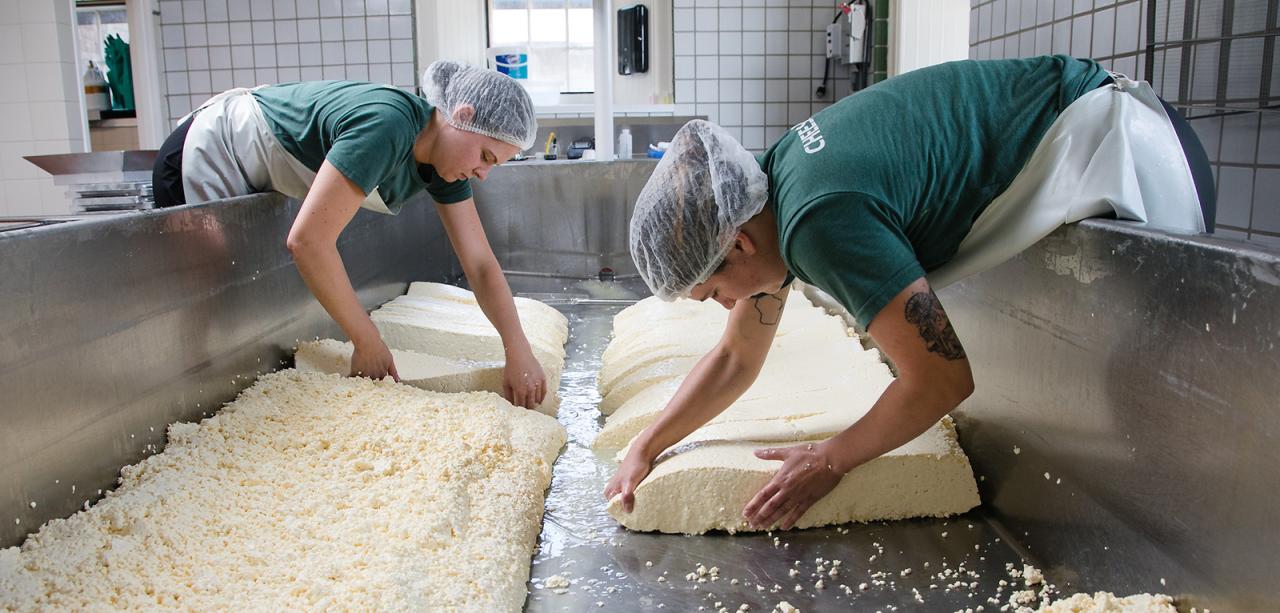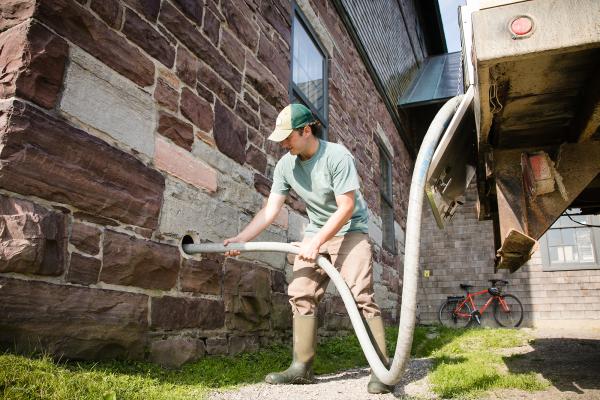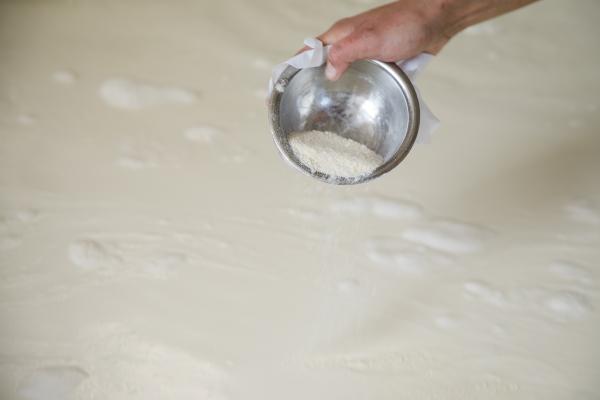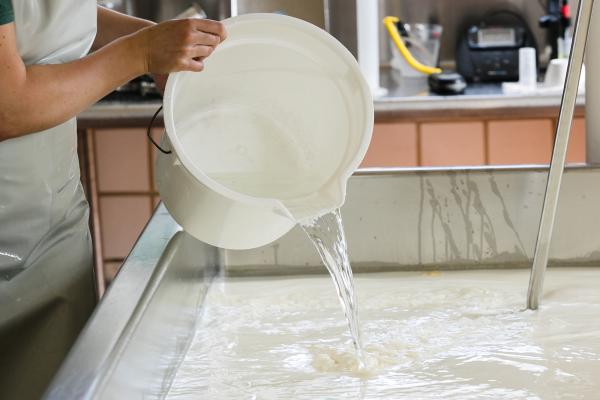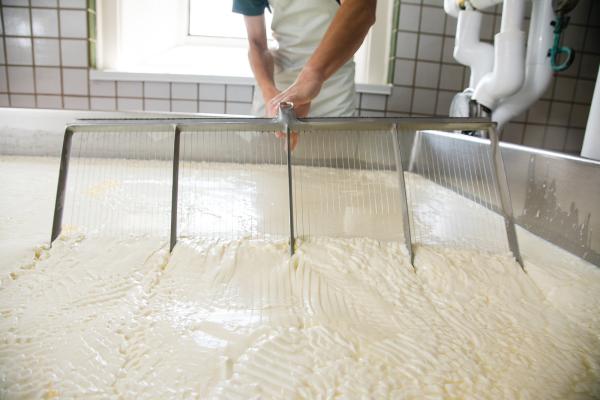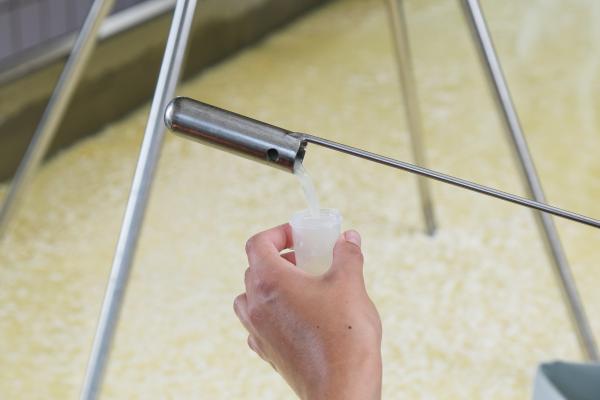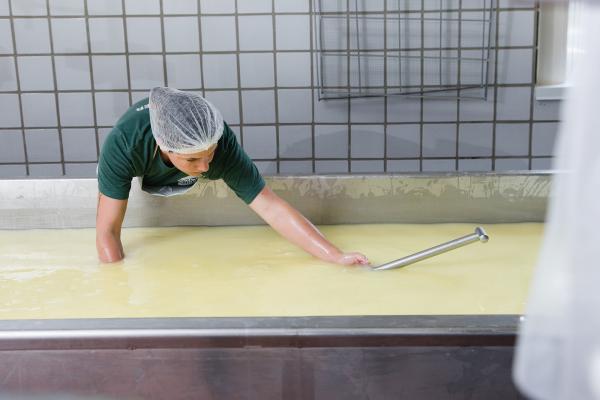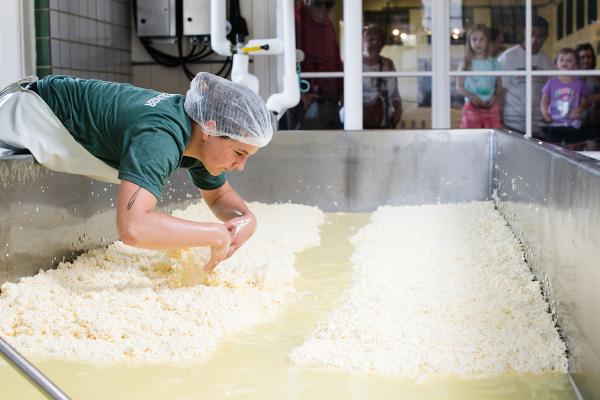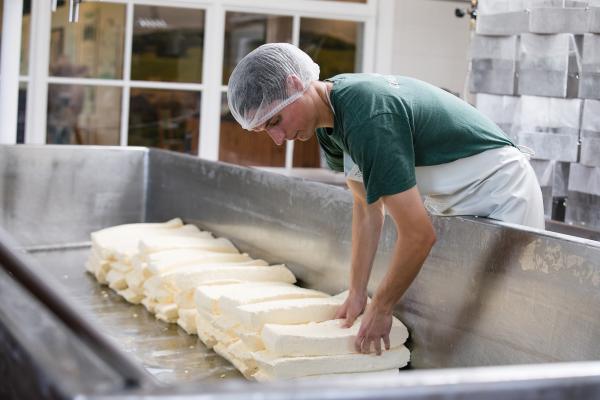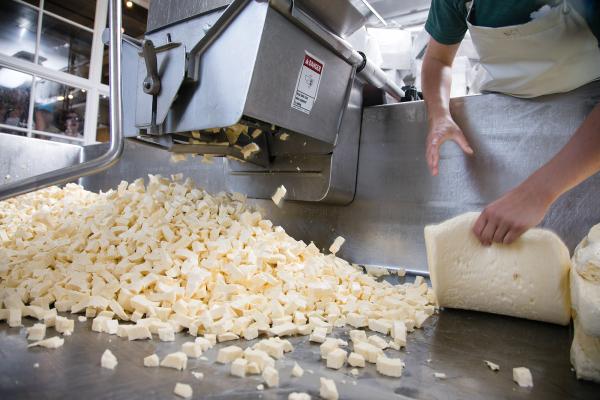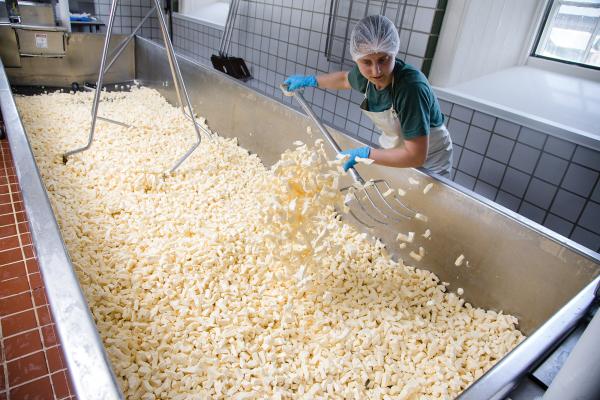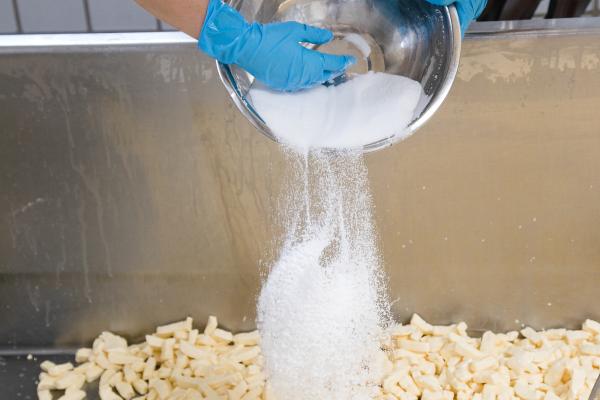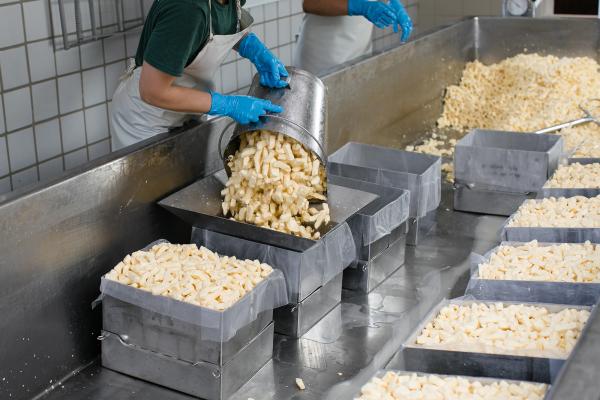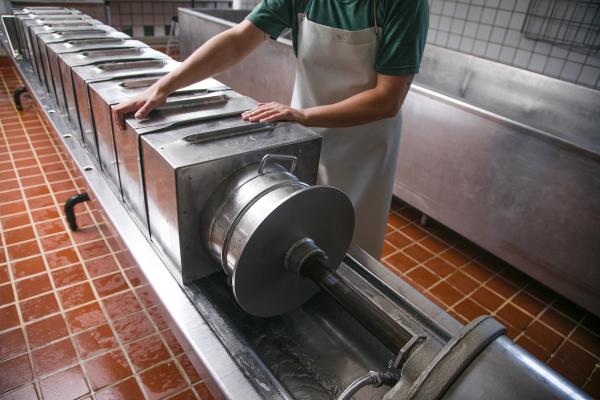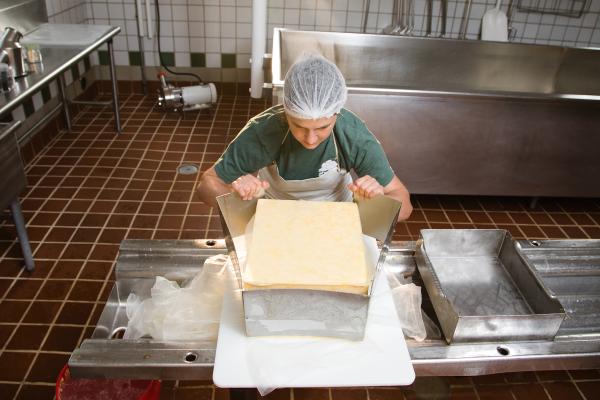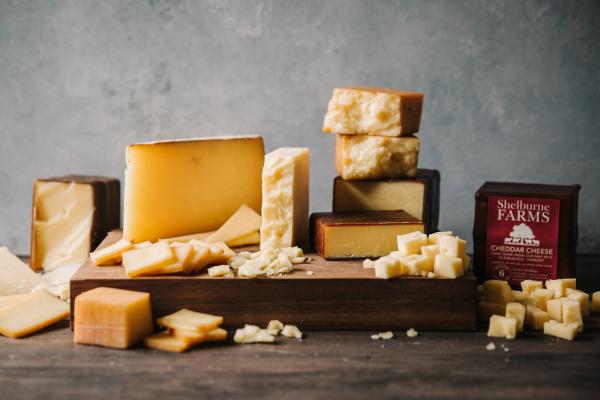What does it take to turn perishable milk into a longer lasting food product, cheese?
Since 1980, Shelburne Farms has made an artisanal, Vermont cheddar. Nearly every day, our cheesemakers turn fresh milk into raw milk cheddar using just four ingredients: the milk from our pasture-raised herd of Brown Swiss cows, starter culture, rennet, and salt. It’s a physical, hands-on process that requires careful attention to every detail and step. Our cows’ pasture-based diet shifts seasonally, and the cheesemakers respond to slight changes in the milk by precisely measuring and adjusting for acidity, moisture, and salt content to craft a consistently delicious product that truly reflects the land it comes from. We craft about 170,000 pounds of cheddar a year.
Watch our cheddar being made at the Farm Barn, mid-May to mid-October as part of your Day Visit.
Curious about our cheesemaking facilities? Take a 3D tour of our cheesemaking and processing facilities!
1. Around 8 AM, fresh milk hauled from the dairy is pumped into the vat in the cheesemaking room. We use all of the milk that the herd produces that morning and the night before. (All photos by Brent Harrewyn except where noted.)
2. Hot water circulates inside the vat walls to gently warm the milk, then starter culture is added to begin the ripening process. Starter culture is a mixture of microbes that eat the lactose (milk sugar) and convert it into lactic acid. This starts to lower the pH of the milk and contributes to flavor development.
3. After about one hour, rennet is added. Rennet is an enzyme that causes the milk to coagulate into a semi-solid curd. Within 30 minutes, the entire vat is filled with a gelled curd.
4. The curd is cut into ¼-inch cubes to begin separating the curds from the whey. About 90% of the milk separates out as liquid whey; the other 10% forms soft, semi-solid curds.
5. The curds are stirred in the whey and heated to just above 100°F, the ideal temperature for the starter culture to grow. Stirring stops after about 75 minutes, once the curds have firmed up and a test sample of whey shows a lowered pH, indicating that the culture is growing (producing lactic acid).
6. Beneath the whey, the curds are pushed to the back of the vat where they start to join together into a solid “pack.” Now the whey can start to be drained off.
7. The whey is drained into an underground tank and later used to fertilize our farm fields. The curds are formed into two loaf-shaped packs on either side of the vat, marking the first step of the process called “cheddaring.”
8. To continue the cheddaring process, the packs are cut into slabs, then flipped and stacked on top of one another repeatedly. This action helps the curds knit together and creates a uniform environment for the starter culture to continue acidification, so the cheese develops correctly.
9. When the slabs reach the desired pH, they are milled into smaller pieces called “fingers.” Milling increases the surface area available for adding salt and contributes to the layered, crumbly texture of cheddar.
10. The curd fingers are tossed around in the vat with a pitchfork to rapidly cool them down to about 90°F. This cooling allows the curds to absorb salt more easily and expel more whey, which helps the curds retain the added salt.
11. Adding salt is a critical step in the cheesemaking process. The salt contributes flavor to the final product, encourages more whey expulsion, and acts as a natural preservative.
12. The salted fingers are weighed and poured into the hoops.
13. Around 3 PM, about seven hours after the milk is first delivered, the hoops are lifted onto the press. The press applies steady pressure to the hoops overnight, allowing the fingers to knit together into solid 40-lb blocks of cheese.
14. The next morning, the hoops are opened and the blocks are vacuum-sealed and sent to the cooler where they will age for the next six months to four years.
15. After aging for six months to four years, a 40-lb block of cheddar is cut into ½- to 10-lb pieces using a pneumatic block cutter, nicknamed “Slice”. (Some pieces are hand-cut.) Each piece is weighed, bagged or waxed, then labeled, all by hand. Our bagged cheeses are sealed in our vacuum sealer (“Grandpa”).
16. Many of our ½-, 1-, and 2-lb blocks receive two coats of wax. This requires hand-dipping them four times in melted wax: once on each end in clear wax, and once on each end in brown wax. After the wax cools, the blocks are labeled and boxed up.
Shelburne Farms cheddar is available at our onsite Farm Store, through mail order, and at local shops and specialty food stores nationwide. Enjoy a taste of this place. (photo: Carey Nershi)
You can view our cheesemaking in action at the historic Farm Barn, or discover the full story of our cheddar during a Sun to Cheese Tour (see our calendar for details).
